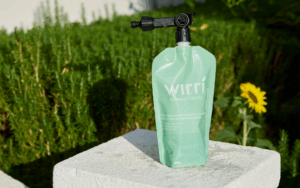Workwear needs change with the seasons, particularly in Australia, where temperatures can fluctuate drastically throughout the year. From lightweight, breathable clothing in the summer to insulated and waterproof gear in winter, choosing the right workwear for each season is crucial for comfort, safety, and productivity. Here’s a breakdown of the key differences in workwear between seasons and what to consider when selecting the right gear for the job.
Summer Workwear: Keeping Cool and Comfortable
Australian summers can be brutally hot, especially for those working outdoors. The key focus of summer workwear is to keep workers cool and protected from the sun. This means prioritising breathable, lightweight fabrics and clothing designed to wick away moisture.
Breathable Fabrics
Cotton and moisture-wicking polyester blends are popular choices for summer workwear. These materials allow for better airflow, helping to reduce sweat build-up and discomfort. Many workwear brands offer high-performance fabrics specifically designed to keep workers cool while maintaining durability.
Sun Protection
With high UV exposure in Australia, summer workwear should incorporate built-in sun protection. This includes long-sleeved, UV-resistant shirts and wide-brim hats to shield the face and neck from direct sunlight. Workwear with UPF (Ultraviolet Protection Factor) ratings can provide added sun safety for those exposed to harsh conditions daily.
Lightweight and Ventilated Designs
Lightweight, loose-fitting clothing allows for better airflow and helps prevent overheating. Some workwear also features ventilation panels under the arms or across the back to improve breathability. Additionally, mesh-lined caps and ventilated hard hats can help keep workers cool while providing necessary head protection.
Autumn Workwear: Transitioning for Temperature Changes
Autumn in Australia brings cooler mornings and evenings, while daytime temperatures can still be quite warm. Layering is key during this transitional season to ensure workers stay comfortable throughout the day.
Layering for Versatility
The unpredictable temperatures of autumn mean workers benefit from layering their clothing. A moisture-wicking base layer keeps sweat at bay, while a light jacket or fleece can be added when temperatures drop. Zippable or removable layers make it easy to adjust clothing as needed throughout the workday.
Wind and Light Rain Protection
As the weather starts to shift, wind-resistant and water-repellent jackets become important additions to workwear. Lightweight rain jackets can offer protection against unexpected showers without causing overheating during warmer parts of the day.
Durable Work Pants
Autumn is a time when heavier work pants become more common. While summer workwear often includes lighter cotton or ripstop fabric, autumn calls for thicker materials such as canvas or denim, which provide added durability and protection from the elements.

Winter Workwear: Insulation and Weather Protection
Winter workwear in Australia needs to provide insulation and protection against cold temperatures, wind, and rain. For those working outdoors, staying warm and dry is essential for maintaining productivity and preventing cold-related health risks.
Insulated Jackets and Layers
Thermal and fleece-lined jackets are a staple of winter workwear. Many workers opt for softshell jackets that provide warmth without excessive bulk, allowing for ease of movement. Layering is again crucial, with a thermal base layer providing insulation while a waterproof outer layer shields against wind and rain.
Waterproof and Windproof Gear
Winter often brings rain and strong winds, making waterproof clothing essential. High-quality rain jackets, waterproof work pants, and insulated gloves help keep workers dry and warm in wet conditions.
Thermal Accessories
Winter workwear often includes beanies, neck warmers, and insulated gloves. Thermal socks and waterproof boots are also important to prevent heat loss and keep feet warm in cold, damp environments.
Spring Workwear: Preparing for Weather Variability
Spring is another transitional season where weather conditions can be highly unpredictable. Some days may still carry the chill of winter, while others feel more like summer.
Lightweight Yet Protective Clothing
Spring workwear requires balance—clothing should be light enough to prevent overheating yet offer protection from occasional chilly mornings and sudden rain. Softshell jackets and moisture-wicking layers are great for this season.
Rain Protection
Spring showers can be frequent, making water-resistant clothing and quick-drying materials essential. Many workers prefer wearing lightweight rain jackets over their usual workwear, ensuring they stay dry without adding unnecessary bulk.
Adapting to Increased Sun Exposure
As the days grow longer and sunnier, UV protection becomes a key consideration again. Workwear with built-in sun protection and wide-brim hats should be incorporated into daily outfits, ensuring workers remain protected from prolonged sun exposure.

Branded Workwear Across Seasons
For businesses, branded workwear is a year-round requirement that must adapt to seasonal changes while maintaining a consistent company image. Embroidery and logo placement remain crucial aspects of custom-branded workwear, ensuring that staff represent the company professionally in every season.
Embroidered Branding for Longevity
Embroidery remains one of the most durable branding methods for workwear. Unlike screen printing, embroidered logos withstand frequent washing and exposure to various weather conditions, making them ideal for year-round uniforms.
Adapting Branding to Seasonal Clothing
To maintain a consistent brand image, businesses often ensure their winter and summer workwear features the same colour schemes, logos, and branding placements. This creates a professional appearance while ensuring that workers are comfortable and appropriately dressed for the season.
Final Thoughts
Workwear must adapt to seasonal changes to ensure workers remain comfortable, safe, and productive in different weather conditions. From lightweight, breathable summer gear to insulated and waterproof winter clothing, choosing the right workwear for the season is essential. Businesses can also benefit from considering how branding and uniform consistency play a role in seasonal workwear, ensuring a professional and practical approach all year round.





